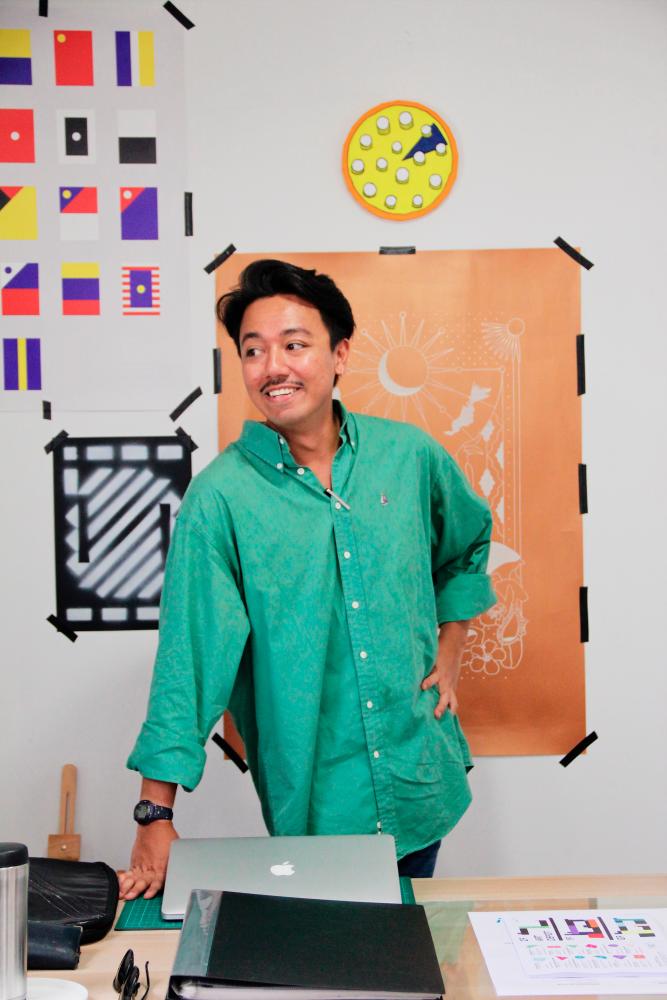Regardless of the outcome of the ongoing debate following the statement “print is not dead”, print is still the fundamental of all things and will continue to grow and adapt to the different technology revolution.
Sherwan Rozan, however, rides on the post-internet wave using both online and offline formats to get his expressive artworks noticed.
He said: “There are new ideas of looking at art digitally and people coming up with art installations but those are just different formats to convey the message across.”
Perhaps we might not be able to make sense out of the 29-year-old graphic artist’s non-figurative, non-representational and non-objective abstract art but we can surely interpret them to our liking.
He added: “Essentially, art is subjective.”
How has your approach towards your works of art changed over the years?
You can see it from my work that it falls within the parameters of vibrant vector shapes, which I’ve learned to use it as a strength.
Within the three years of experimenting with various styles, I realised that I always find my way back to certain colour schemes and the typical geometric shapes.
Still, I wouldn’t say that I’ve found my style, but it defines me at this moment of time. Because I wouldn’t want to identify myself with a certain style, I don’t think as an artist it’s fair to limit yourself to just one style per se as it limits your creativity and career.
How do you define a good piece of art?
It’s when someone has a sense of attachment to it, and they find meaning out of that piece of work. Hence, it can’t be superficial. Sometimes people identify themselves to a piece of artwork because say, for example, they resonate so deeply with what the artist has gone through in life.
Even when people say Vincent van Gogh is the best artist in history, personally, I can’t relate to his struggles. It is great though that people are acknowledging him right now but that does not mean I have a sense of connection or attachment to his work.
Describe your creative process?
It depends if I’m doing it for myself or my clients. For my work, the process usually starts with having a frame of mind of what to do, not so much of an abstract idea; it could be a memory of what I’ve seen throughout the week, or highlight I’ve seen.
When it comes to the rationale of it, it’s quite cringey to put it in black and white. I don’t stress so hard on having a conceptual meaning to my work. Apparently, when an artist titles their work, it automatically defines the whole work, especially in abstract art, leaving no space for the audience to freely interpret.
What kind of dialogue do you want people to start talking about when they look at your work?
When the audiences associate my work to the western art movements, it’s totally fine. My narratives may have started from there, but I don’t want it to be a western idea and I hope they can see it from the Malaysian or Asian context.
It’s necessary with what I’m doing so that the public can be more open to other concepts and ideas. There are people out there who are appreciative of it, but for the masses to align themselves
to the mentality, it will take some time.
What are your thoughts on the idea that “print is not dead”?
I’ll always want to materialise my work. Print is a general idea of material things so I think it’ll never go away and I truly stand behind that idea. If everything is on digital, it seems like nothing will ever be archived.
However, the world will soon be heading towards that approach, but I don’t think I can keep up with that world view.
It’s not necessarily right or wrong, but a matter of personal preference.
It’s sad to think of it, but the truth is I don’t even buy magazines and newspapers so it’s hypocritical to say print is not dead. Looking from the art and design perspectives, print is still the foundation of it all and a very important aspect.
Graduated with a degree in marketing communication, Sherwan now works a freelance graphic artist after his brief stint as a fashion merchandiser.









